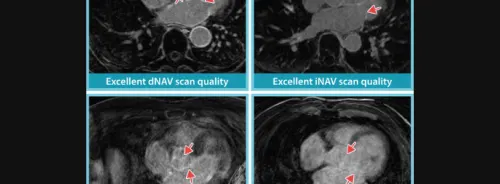Inconsistent use and application of radiographer abnormality detection schemes in UK hospitals could be putting patients at risk, according to a recently published survey in Radiography. Although most hospitals operate radiographer abnomality detection schemes (RADS), not all have guidance or standards, and use of the scheme by individual radiographers is inconsistent.
Errors in image interpretation in the emergency department have been addressed by radiographer abnormality detection schemes (RADS) as an immediate review of images, which is not intended to replace either the review and interpretation of images by the treating clinician or the final radiology report.
The RADS has been implemented in 85-90% of UK hospitals. The most common communication methods are either a flag on an electronic system (red dot) or an electronic or written proforma in which the radiographer describes their observations. There has not been national guidance or standards for RADS, and hospitals have developed local systems. The authors contend that with digital imaging technology and practices, inconsistencies in RADs communication may affect patient safety and service quality.
The survey was sent to all National Health Service hospitals with either an emergency department or minor injury unit and a radiology department to find out how widely used RADS is and the communication methods used.
Results
325/510 questionnaires were completed. Most sites (288/325; 88.6%) operated a RADS with the majority (227/288; 78.8%) employing a visual ‘flagging’ system as the only method of communication, although symbols used were inconsistent and contradictory across sites. 61 sites communicated radiographer findings through a written proforma (paper or electronic), but this was run in conjunction with a flagging system at 50 sites. The majority of sites did not have guidance on the scope or operation of the ‘flagging’ or written communication system in use. Of the sites using flagging systems only 53.8% reported having RADs guidelines and 71.1% considered radiographer participation to be voluntary. 61 sites used comment proforma; of these 57.4% had guidelines and radiographer
participation was considered voluntary at 62.3% (38/61).
The authors conclude that while RADS is an established clinical intervention to reduce errors in diagnostic image interpretation, the lack of standardisation in communication processes and practices alongside the rapid adoption of technology has increased the potential for error and miscommunication. They write, "without doubt, the findings paint a worrying picture", adding, "the lack of RADS standardisation alongside the rapid adoption of technology has increased the potential for error and miscommunication, an ironic situation given that RADS were initially introduced to reduce risk of diagnostic errors."
They recommend that standardisation of RADS operation is required, particularly in the context of increasing electronic sharing of images between healthcare organisations. They note that since distribution of this survey, guidance by the UK Society and College of Radiographers, "Preliminary clinical evaluation and clinical
reporting by radiographers: policy and practice guidance" has been published, but it does not recommend standardisation.
Image source: freeimages.com
References:
Snaith B, Hardy M, Lewis EF (2014) Reducing image intepretation errors - do communication strategies undermine this? Radiography 20: 230-4.
Latest Articles
Inconsistent use and application of radiographer abnormality detection schemes in UK hospitals could be putting patients at risk, according to a recently p...






